Korean side dishes are called banchan, and they’re the little dishes of extra flavor that accompany the main course of a Korean meal. These side dishes can be likened to appetizers, but they’re not just served at the beginning of meals; they are also served as part of the main course.
Korean side dishes have an important function in Korean cuisine: they add color, texture, and flavor to your meal. They also provide nutrients such as vitamins and minerals that may be lacking in the main dish.
Let’s take a look at some different types of Korean side dishes you can enjoy with your main dishes.
Korean Side Dishes
1. Kongnamul (Soybean Sprouts)
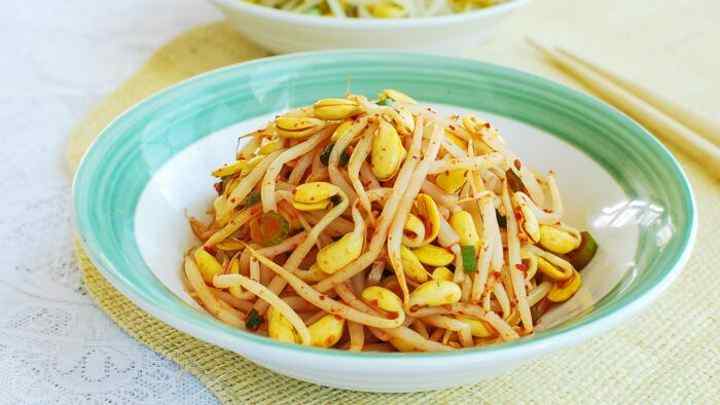
Kongnamul also called soybean sprouts or soybean shoot is a traditional Korean dish that is often eaten as a side dish. They’re made from soybeans, which are soaked and then boiled until they sprout.
Soybean sprouts are healthier than regular bean sprouts because they contain more protein and less fat than other beans. You can also mix them with sesame oil and sugar before serving for an extra boost of healthiness.
2. Baechu Kimchi (Cabbage Kimchi)
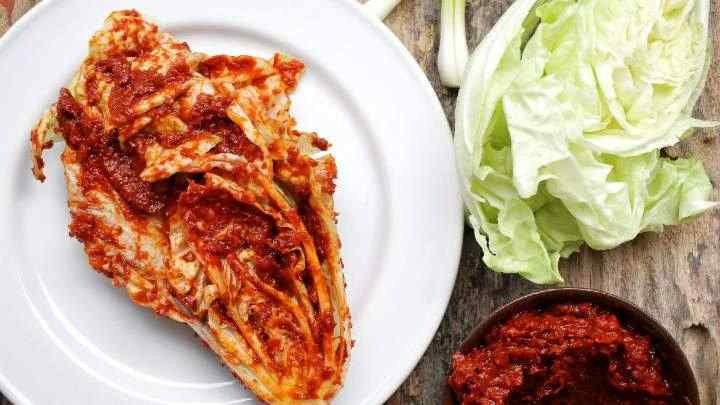
Baechu kimchi is the most popular type of Kimchi and one that even non-Koreans have likely tried before. It’s a mixture of fermented napa cabbage with a variety of seasonings such as garlic, scallions, chili pepper powder, and ginger.
The fermentation process makes the vegetables soft and sour in flavor, similar to sauerkraut but with a spicy kick from the chili pepper powder.
3. Oi Muchim (Seasoned Cucumber Slices)

This simple side dish has been a favorite among Koreans for a long time. It’s a refreshing and crunchy salad that goes well with spicy dishes like kimchi jjigae (kimchi stew).
You can also make it at home; just slice the cucumber thin, season it with soy sauce, garlic, and sesame oil, and then serve immediately or refrigerate until ready to serve.
SEE: Enjoy Discount on Food and Drinks During Happy Hour at Culinary Dropout
4. Tteokbokki (Stir-Fried Rice Cakes)
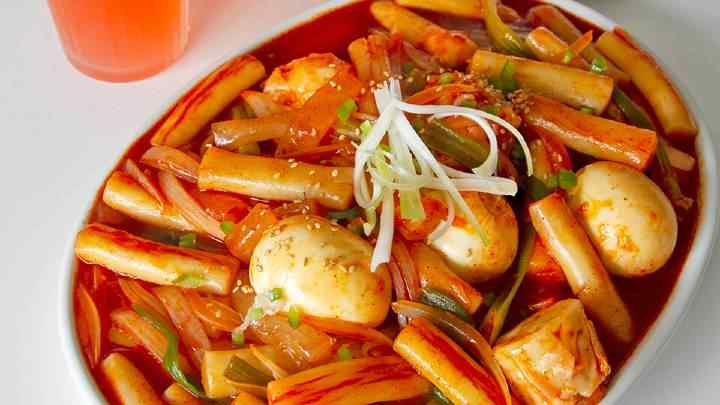
Tteokbokki, also known as stir-fried rice cakes, is another popular Korean side dish that consists of rice cakes, fish cakes, eggs, and chili pepper. Other ingredients may include dried anchovies, garlic, dried kelp, and green onions.
5. Kkakdugi (Radish Kimchi)
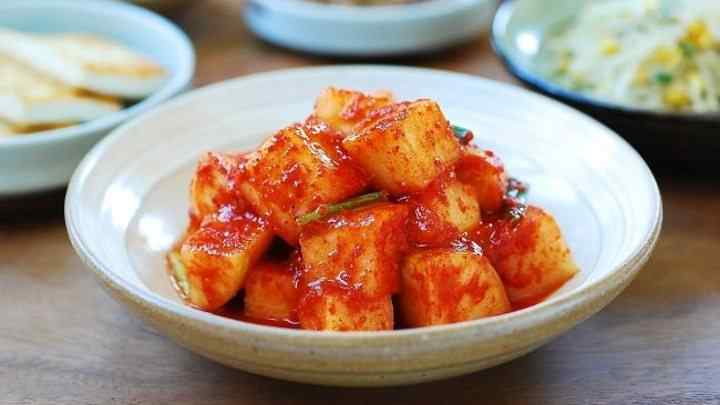
If you haven’t tried Kkakdugi before, you’re missing out on one of the most delicious Korean side dishes out there. It’s crunchy, and spicy, and goes well with many different types of meals.
The most common type of radish Koreans use in this dish is called “Joseon radish.” The radish itself has a unique taste, so when you combine it with other ingredients like chili powder, garlic, and fish sauce, it takes on an interesting flavor profile.
This kimchi tastes great with grilled meat, but it also works well with just about any meal, including rice, ramen, and tofu.
6. Sundubu Jjigae (Tofu Stew)

Sundubu Jjigae is a delicious Korean side dish that’s easy to make at home. It consists of tofu, vegetables, soy sauce, and various spices. You can serve this hearty stew alongside rice or noodles to enjoy every bit of its deliciousness.
7. Jjukkumi Gui (Seasoned Baby Octopus)
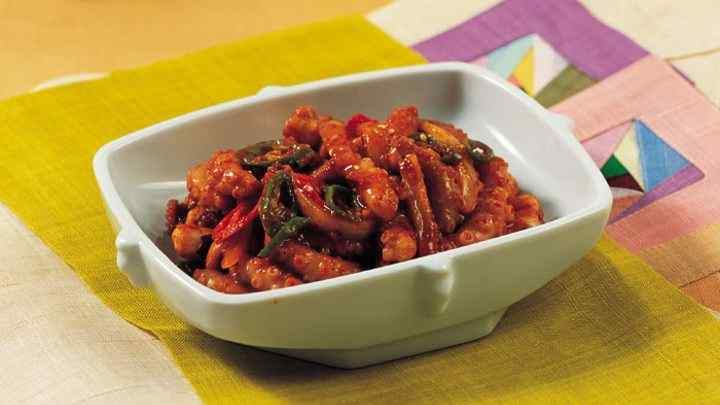
If you’re looking for a simple, delicious side dish to go with your main, look no further than this dish. This is a great side dish for parties or get-togethers because you can serve it warm or cold.
So if you’re making it ahead of time and need to store it in the fridge until ready to serve, that’s okay. It will still taste great when chilled.
8. Sukju Namul (Mung Bean Sprouts)
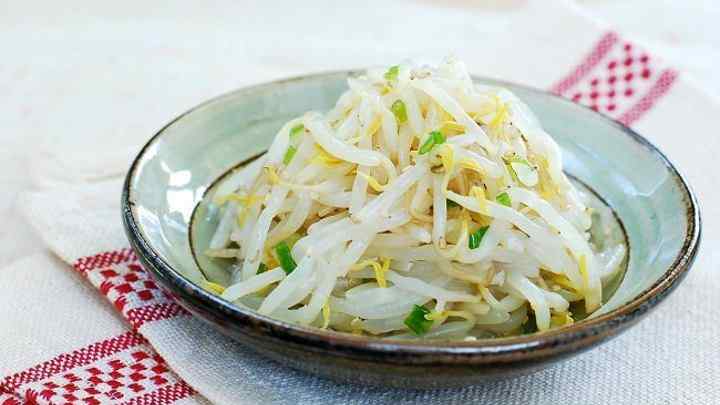
Sukju Namul is simply the sprouted seeds of mung beans. You can serve this dish alongside rice and other side dishes such as seasoned lotus roots. Mung bean sprouts are available pre-cut in plastic bags or packages, so all you have to do is rinse them before cooking them.
SEE: How You Can Turn Food Scraps Into Food
9. Yeongeun Jorim (Seasoned Lotus Roots)
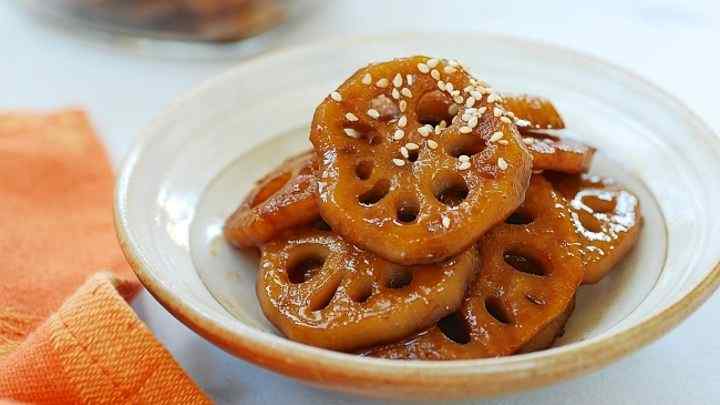
Lotus roots are the tubers of lotus plants, and Koreans have been eating them for thousands of years. This vegetable is very nutritious, and you can serve it as a side dish with rice, meat, or fish.
You can find Lotus roots in most Asian grocery stores or online. When choosing lotus roots at the supermarket, look for ones that are firm and free of spots or blemishes.
SEE: Why The Korean Iced Americano Is People’s Favorite Coffee
10. Japchae (Korean Stir-Fried Noodles)

This is one of my favorite Korean side dishes because it’s sweet and savory at the same time. This hearty dish consists of stir-fried glass noodles with vegetables like carrots, and spinach leaves, and meat such as beef or chicken.
11. Oi Kimchi (Cucumber kimchi)
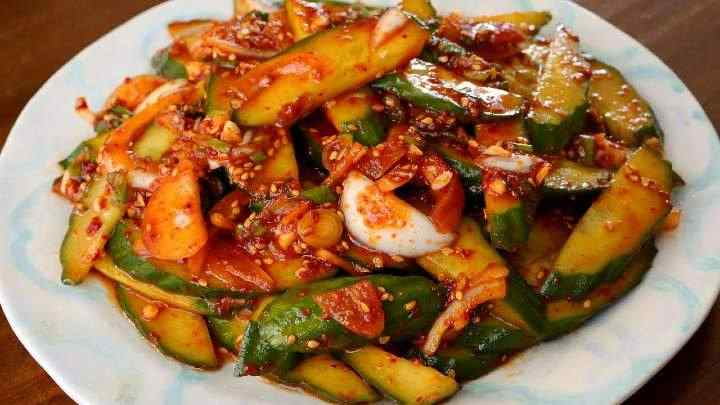
Oi kimchi is another popular type of kimchi that consists of fermented cucumber and other ingredients like chili pepper, onions, and ginger. It has a spicy kick to it and tastes great with a variety of foods, including white rice and soups.
12. Doenjang-Jjigae (Soybean Paste Soup)
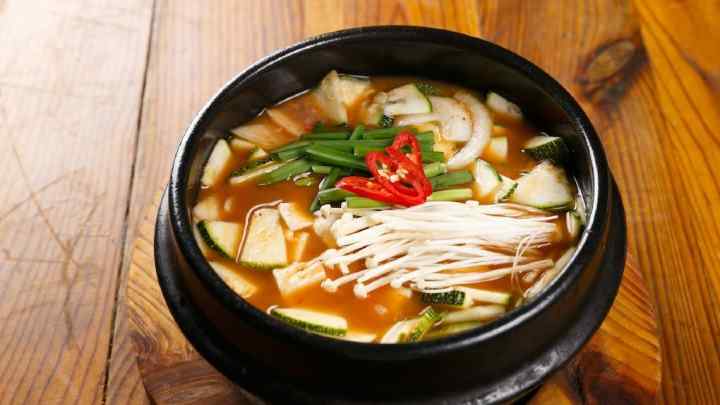
This is a popular Korean soup that consists of soybean paste, tofu, zucchini, and other vegetables. It’s a nutritious soup that makes a good side dish for rice and Korean BBQs.
13. Bulgogi (Marinated Meat)

Bulgogi is thinly sliced marinated beef that’s grilled on an open flame. It’s a versatile dish that you can eat as a standalone dish or serve with rice and other main dishes. Koreans also use it as a topping for bibimbap (mixed rice).
14. Seasoned Mushrooms
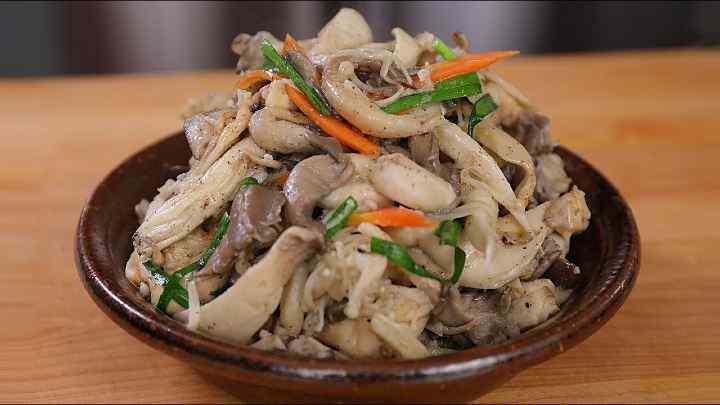
Seasoned mushrooms are another common food that Koreans serve alongside other foods. The most common type of mushrooms they use is shiitake mushrooms, but you can use other varieties such as oyster mushrooms.
15. Sigeumchi-Namul (Sautéed Spinach)
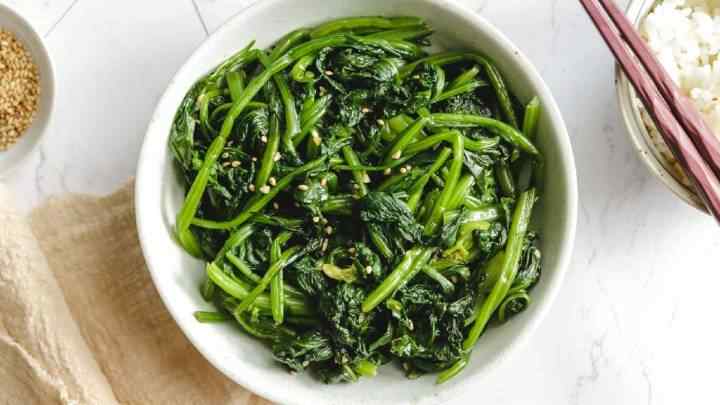
This type of side dish consists of spinach, soy sauce, sesame oil, sugar, salt, and garlic. Koreans serve it hot or cold as a side dish to accompany other dishes such as samgyetang (ginseng chicken soup).
16. Naengmyeon (Cold Noodles)
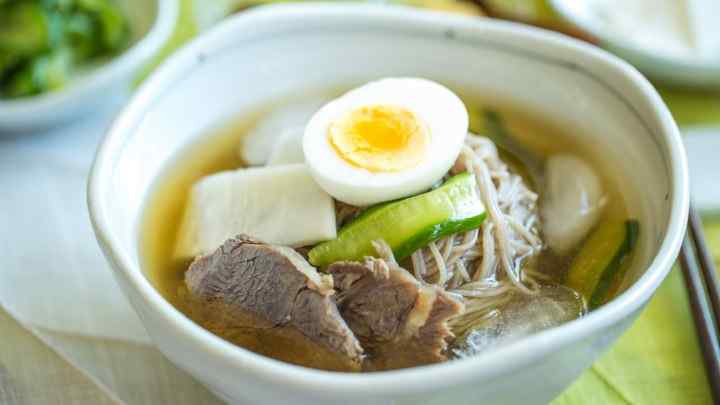
This is a popular Korean side dish that goes well with rice and other main dishes. It consists of buckwheat noodles, potato noodles, beef broth, cucumber slices, and eggs. You can serve this side dish hot or cold depending on your preference and the season.
SEE: Here’s A Chance to Win A $500 Food Lion Gift Card
17. Gamja Salad (Potato salad)
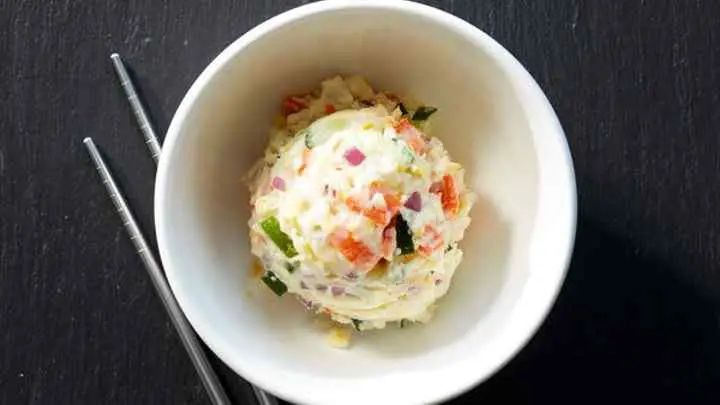
This is a popular Korean side dish that consists of bite-sized pieces of potatoes, mayonnaise, ketchup, and seasonings. It looks similar to an American potato salad, but it’s not as creamy or mayonnaise-based as its American counterpart.
Koreans serve this salad cold as an accompaniment to many dishes including porridges, fried chicken, soups, and stews.
FAQs
What is kimchi?
Kimchi (or kimchee) is a traditional Korean food made by fermenting vegetables with salt, lactic acid bacteria, and other ingredients.
There are many different types of kimchi, but the common ones are cabbage kimchi, radish kimchi, and cucumber kimchi. They all have similar ingredients and are fermented for a few days or weeks for them to become fully matured.
Are Korean side dishes healthy?
Yes, they are. Korean side dishes typically consist of fresh ingredients, so they’re very healthy. Some of them are even considered superfoods since they are rich in vitamins, fiber, and minerals.
Where can you buy Korean side dishes?
If you live in a large city such as New York or Los Angeles, then you’ll be able to find Korean side dishes at your local Asian grocery store or supermarket.
If you’re unable to find Korean side dishes in your local area, then try online Asian grocery stores. These stores sell Asian foods like Korean side dishes and deliver them right to your doorstep.
Conclusion
Korean side dishes are small dishes that are served with rice and other main dishes. They contain a variety of ingredients, such as vegetables, meat, and seasonings, that help add an extra kick of flavor and nourishment to a meal.
From kongnamul (soybean sprouts) to gamja salad (Potato salad), the above Korean side dishes will help you understand more about Korean food culture.
Thanks for reading.
Did you enjoy this article? Visit Cheffist to learn more about Korean dishes.







